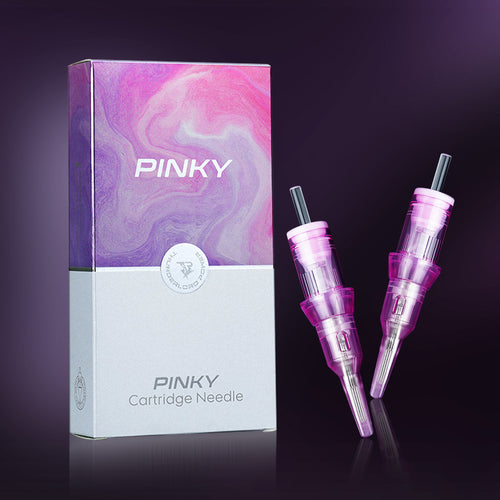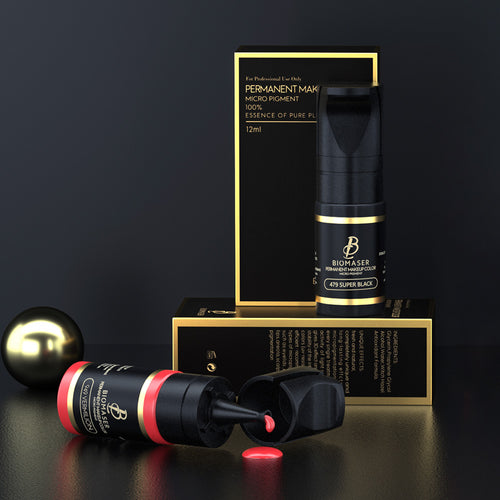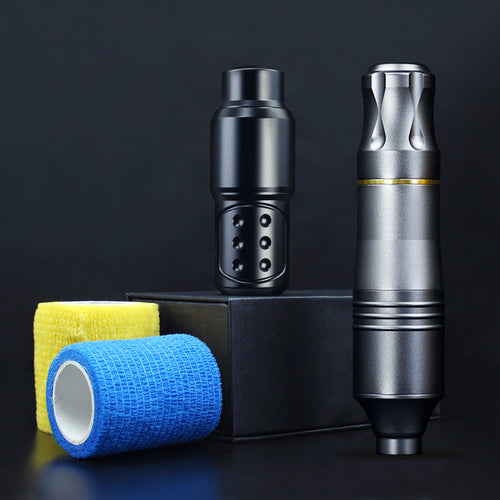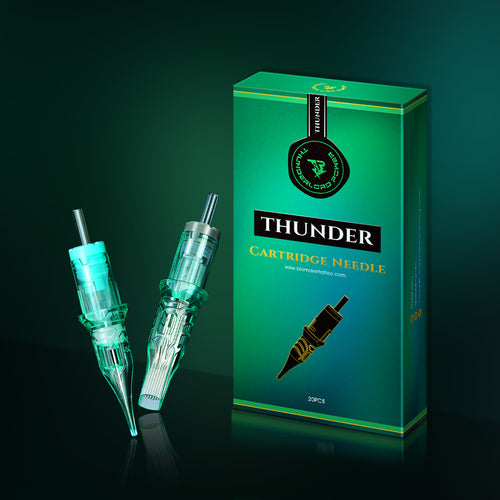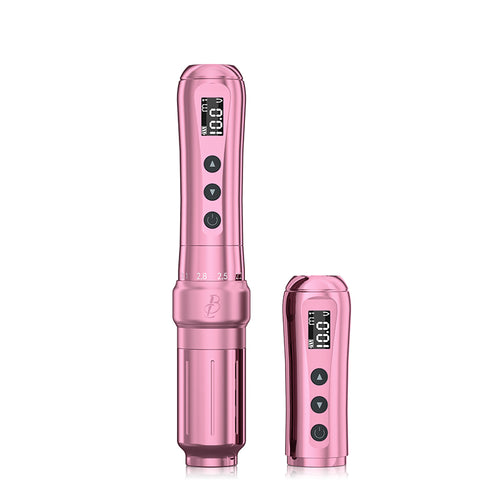How to Hold Your Tattoo Machine for Optimal Control

Tattooing is an art and a skill that requires practice. How you hold the tattoo machine affects the quality of your work. A proper grip is safer and more comfortable for the artist and client. This blog will discuss effective techniques for holding the tattoo machine, different methods based on various types of machines and processes, practical tips for easier handling, and recommendations for practicing your grip.
The Importance of a Proper Tattoo Machine Grip

Increase Precision and Accuracy
Precise and accurate tattooing is essential. The way you grip your tattoo machine directly influences your ability to create clean lines and smooth shading. A good grip lets you move easily around curves and complicated designs. If you grip the machine wrong, you'll get shaky lines or marks that ruin the tattoo. Master the correct grip to meet your clients' expectations.
Reduce Hand and Arm Strain
Tattoo sessions can be long and tiring. If you grip it wrong, you can strain your hands, wrists and arms. This can lead to injuries that could affect your tattooing career. Ergonomic grip techniques help you work comfortably and well throughout each session.
Ensure Client Safety and Comfort
A steady hand and controlled movements are essential not only for artistic purposes but also for the safety and comfort of clients. A loose grip can lead to slips and unintended movements that may cause pain or injury. Keeping control of the machine ensures that each stroke is intentional and precise, creating a safer environment during the tattooing process.
7 Stroke adjustable Thunderlordpower U7 Wireless tattoo Machine Pen
How to Hold the Tattoo Machine? Correct Grip Techniques
Basic Grip Fundamentals
To hold a wireless tattoo machine properly, your hands should be in the right position. Keep your wrist relaxed and your fingers around the grip. Use your thumb to stabilize the machine. Aim for a firm yet flexible hold, allowing your hand to move fluidly without tensing up.
Finger Placement
Each finger has its own role when gripping a tattoo machine. The index finger guides the machine, while the middle finger provides support. The ring finger can help keep your hand steady, especially when you're doing detailed work. Your pinky may sometimes touch the client's skin to give you more control. Try different finger placements to find the best fit.
Angle of the Machine
The angle the machine is held at affects the results. A slight tilt (about 45 degrees) is best for outlining, as it allows the needle to make even contact with the skin. Changing the angle can create different effects for shading and coloring. Watch how the needle touches the skin and change the grip and angle if needed.
Do Different Types of Tattoo Machines Require Different Gripping Methods?
Coil Tattoo Machines
Coil machines require a specific grip due to their design and mechanics. When using a coil machine, hold it like a pencil—firm but controlled. The index finger should mainly guide the machine, while the thumb and middle finger provide support. This grip allows for better control over the needle's depth and movement, which is essential for creating clean lines.
Rotary Tattoo Machines
Rotary machines operate differently from coil machines and have a different feel. They are usually lighter and quieter, allowing for a gentler grip. It is important to hold the machine firmly but not too tightly, as a tight grip can cause unnecessary fatigue. Maintaining a stable wrist is crucial, with fingers used to guide the machine. The goal is to achieve a smooth flow without applying excessive pressure.
Pen-Style Machines
Pen-style machines look and feel like regular writing instruments. They are designed for comfort and ease of use, promoting a relaxed grip. Hold the pen as you would a standard pen or pencil, with fingers comfortably positioned along the body of the machine. This grip encourages greater accuracy, making it easier to execute fine details and intricate designs.
Does Grip Change for Different Tattoo Steps and Processes?

Lining vs. Shading
During lining, you want a firmer grip to ensure precision and control. A steady hand helps create clean, sharp lines. When transitioning to shading, a lighter grip is often more effective. This allows for gentler movements, which can produce softer gradients and blending effects.
Color Packing
Color packing requires a different approach. You’ll want to apply a firmer grip to ensure consistent ink delivery. Your fingers should work together to keep the machine steady, allowing the needle to penetrate evenly into the skin. The key is to maintain control while using rhythmic motions to fill areas effectively.
Touch-ups and Detailing
During touch-ups and detailing, your grip should be adjusted to reflect the delicacy of the work. A light touch is essential here; you may want to use your pinky to anchor your hand against the skin for added stability. This ensures you can make precise adjustments without risking any accidental slips.
Tips for Easier Handling of the Tattoo Machine

Ergonomic Considerations
Choosing a tattoo machine that feels comfortable in your hand is crucial. Look for machines that are well-balanced and lightweight. Ergonomic designs can help reduce strain and allow for longer tattooing sessions without discomfort. If possible, take the time to test different machines to find one that suits your grip style.
Hand and Wrist Exercises
Incorporating exercises into your routine can strengthen your grip and increase endurance. Stretching your fingers, wrists, and forearms before and after a session can help prevent stiffness. Simple exercises, such as squeezing a stress ball or performing wrist curls with light weights, can improve your grip strength, making it easier to handle your machine during long sessions.
Frequent Breaks
Take regular breaks during lengthy tattoo sessions. Not only does this help alleviate muscle strain, but it also allows you to reset your focus. Use this time to stretch your hands and wrists, hydrate, and assess your progress. Staying refreshed can enhance your concentration and performance, ultimately benefiting your artwork.
[[related_products_2]]
How to Practice Holding Your Tattoo Machine
Simulation Exercises
Practicing your grip without ink or skin can provide invaluable experience. Use practice skins, fruit, or even paper to simulate tattooing. This allows you to experiment with different grips and techniques without the pressure of working on a live client. Focus on your finger placement, grip pressure, and machine angle during these exercises.
Feedback Mechanisms
Seek feedback from experienced artists or peers. Observing others and asking for critiques on your grip can offer insights you might not have considered. Constructive criticism can help you refine your technique and make adjustments for improvement.
Video Tutorials and Resources
Utilize online resources, including video tutorials and instructional websites, to enhance your understanding of grip techniques. Visual demonstrations can clarify concepts and provide new strategies to try. Many artists share their tips and tricks online, offering a wealth of knowledge available at your fingertips.
Create Great Tattoos with an Effective Grip!
A proper grip helps you work more precisely, reduces strain and improves client safety. By following the techniques in this blog, you can improve your tattooing skills. Practice and get feedback to improve. With practice, you can develop a grip that lets you create great tattoos while staying comfortable and in control.




